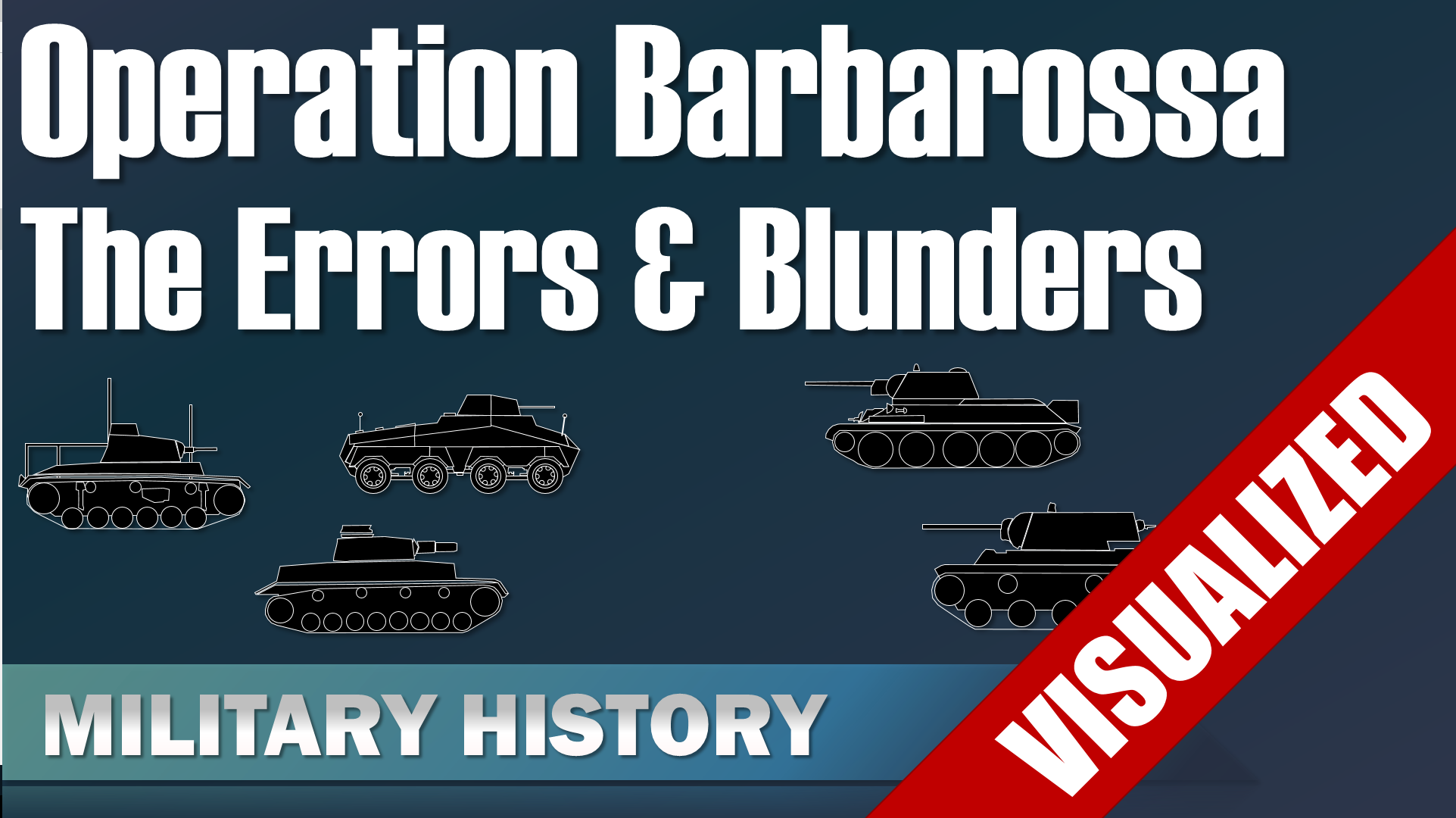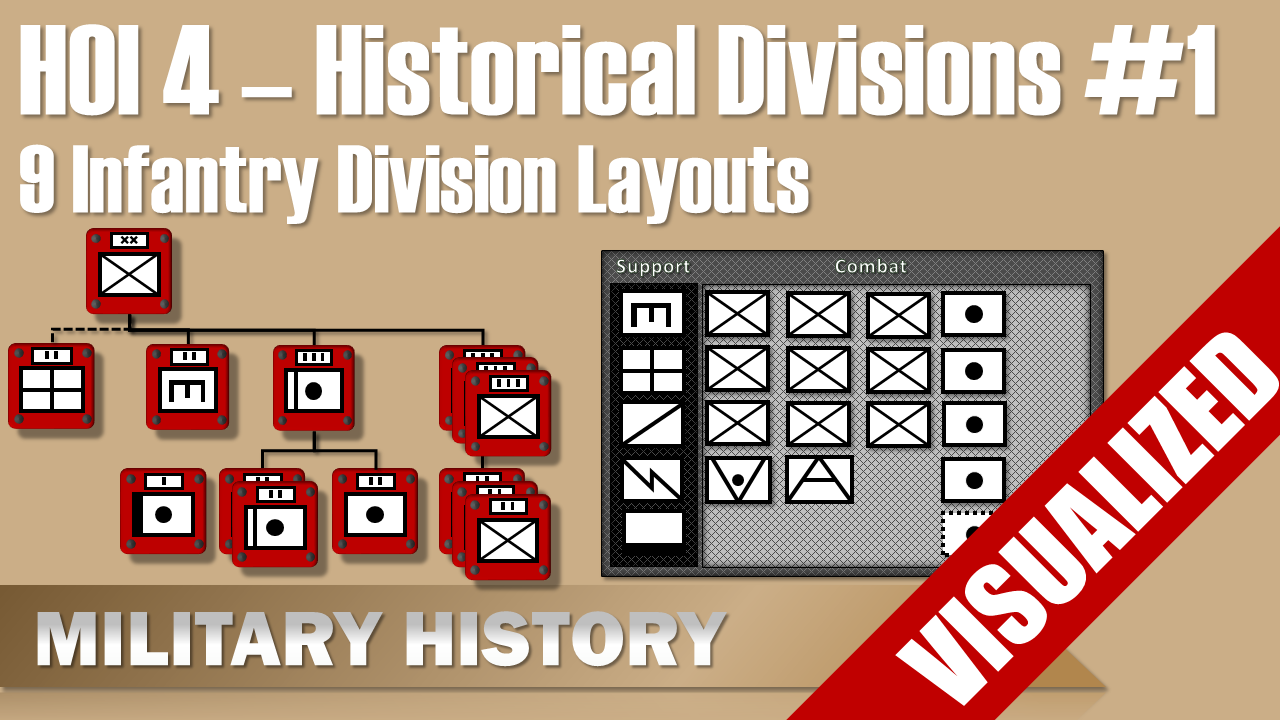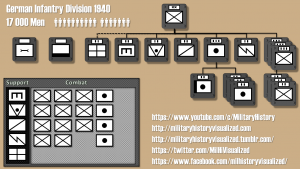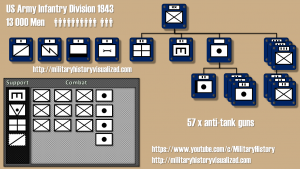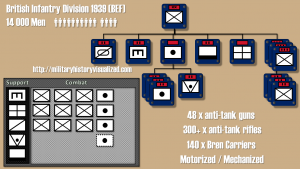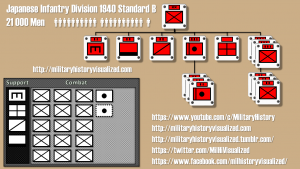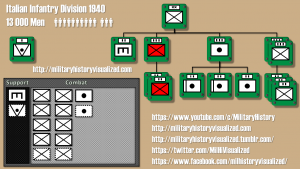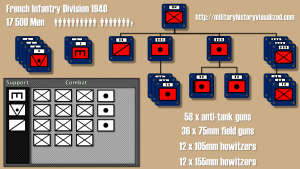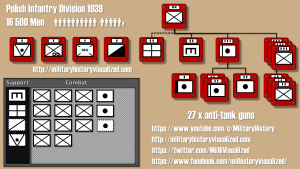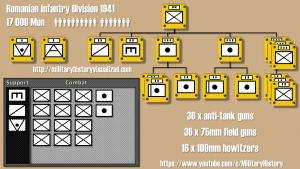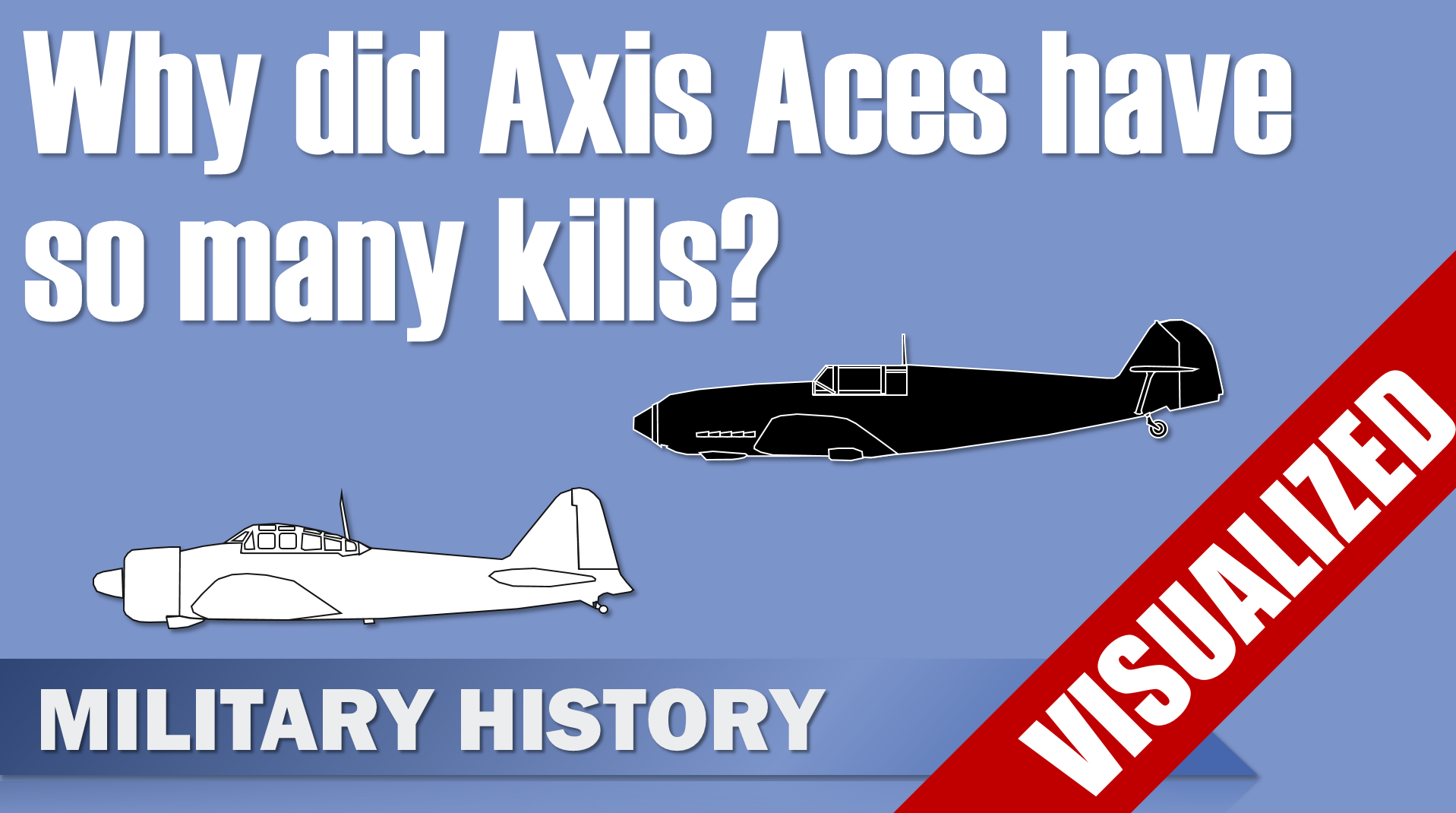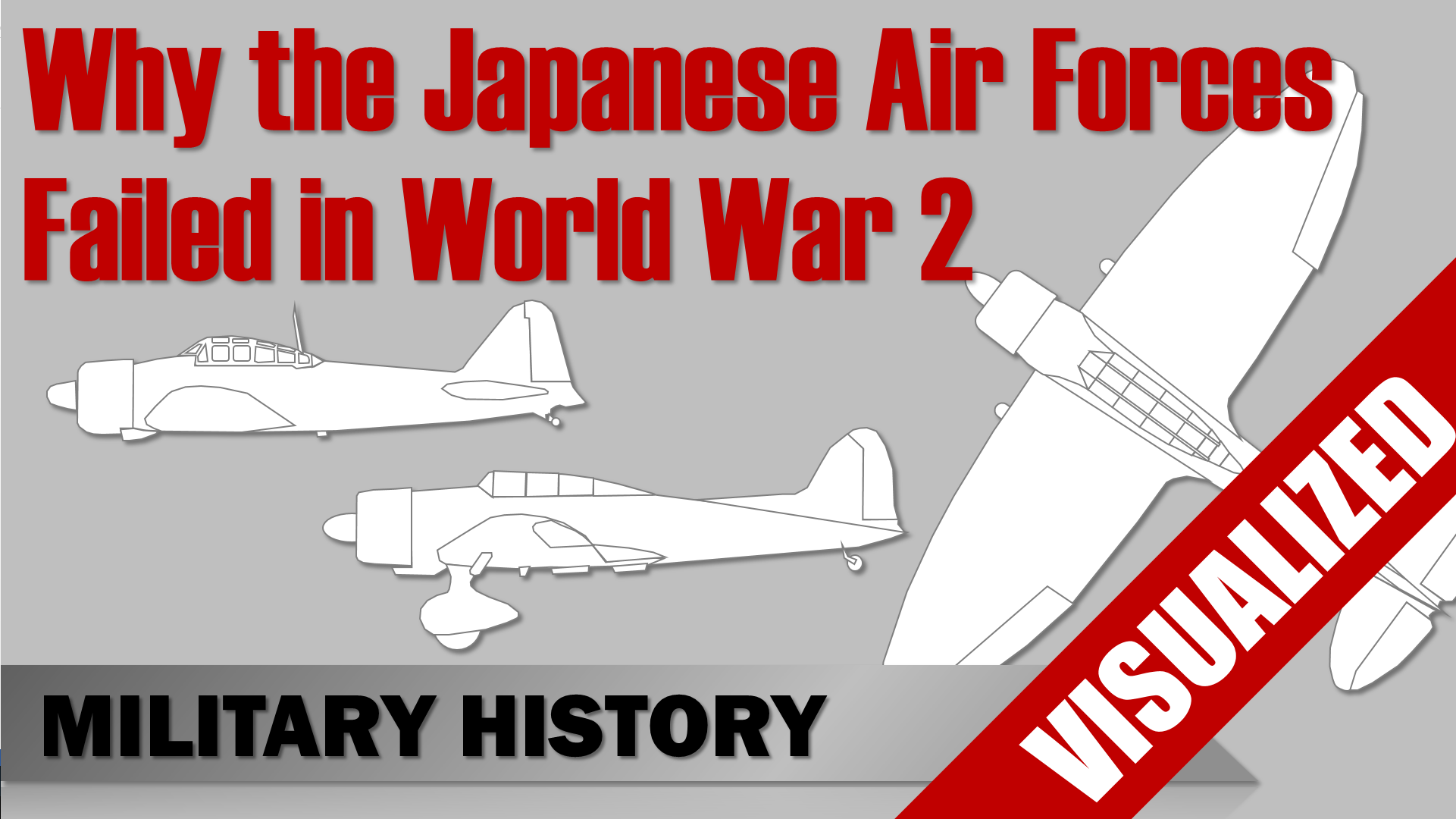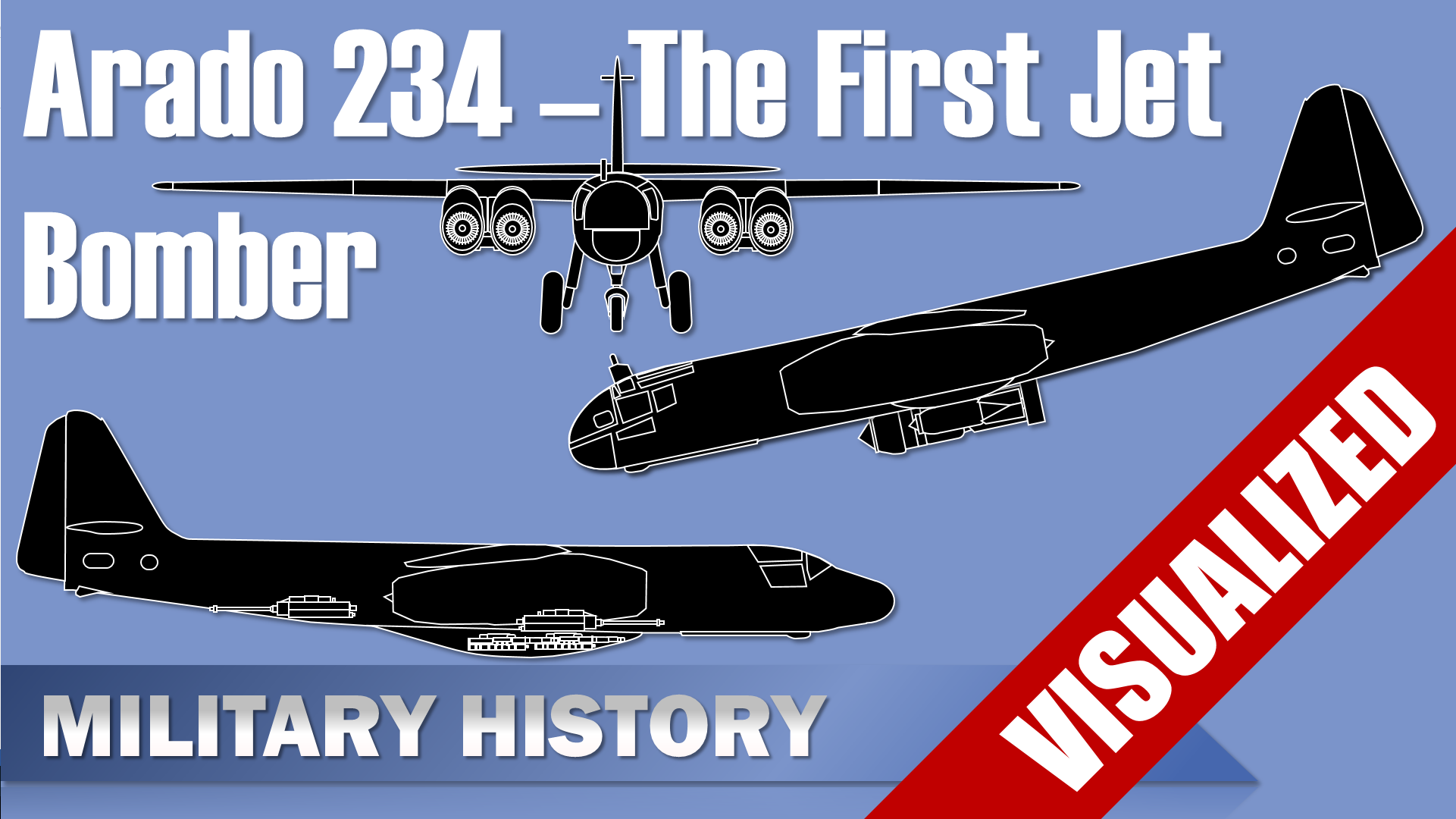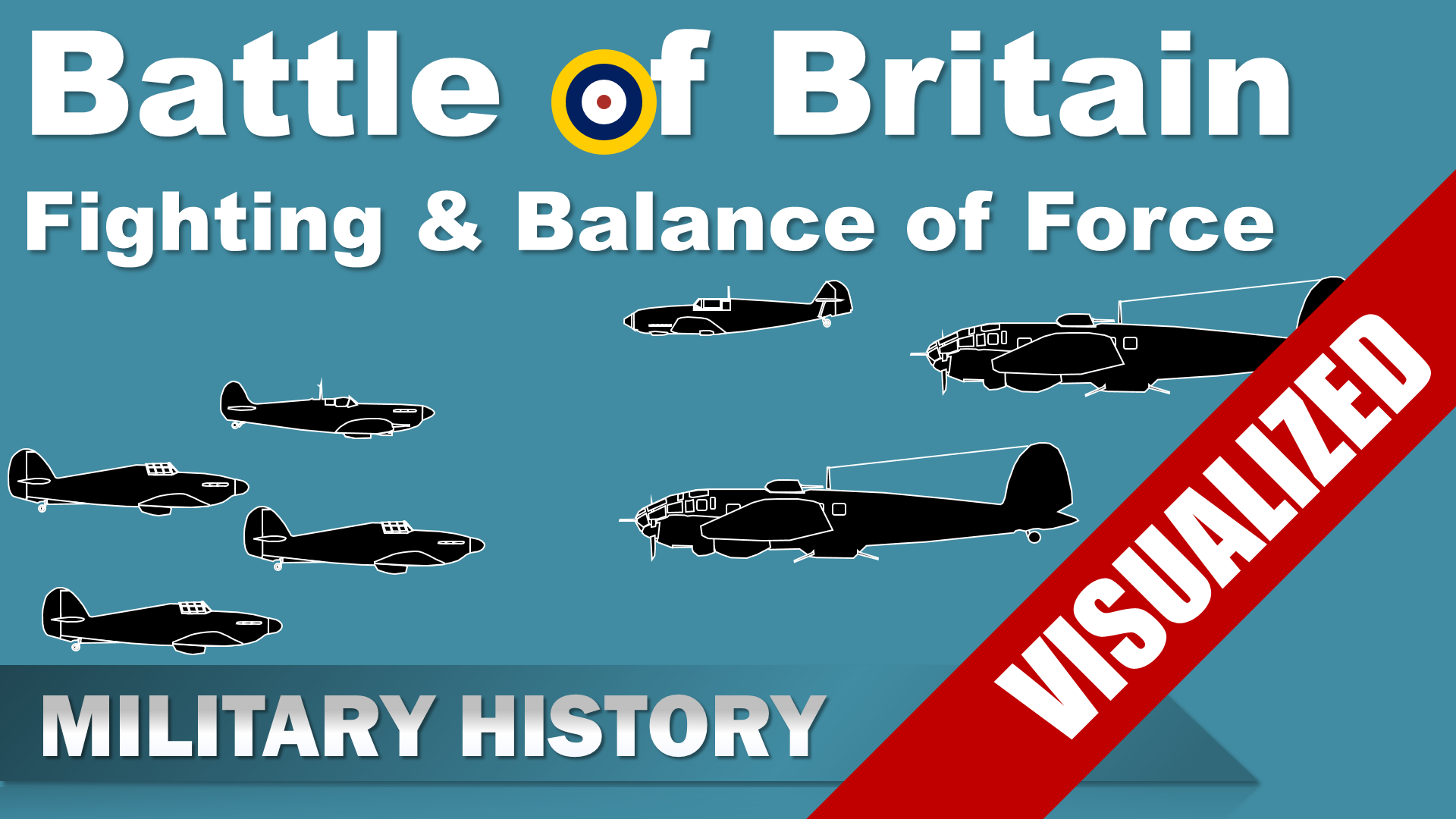Intro
Well, this is basically a follow-up video on my second video that I originally wanted to release quite early on, well more than 50 videos, 800 000 views and 20 000 subscribers later, here we go. The major error and blunders of the Hitler and his generals during the planning and execution of Operation Barbarossa.
Hitler & His Generals
First off, some words about Hitler and his generals, Barbarossa was basically their baby, thus both of them were responsible, yet similar to some parents, they constantly blamed the other side for all the shortcomings of their little brat in the Russian steppe. I think, both of them had their fair share of bad decision, hence none of them is above scrutiny.#
Structure
Since, we have dealt with the initial family issues, time to get started, I structured this video into two parts, the first part covers all the planning and preparation errors, the second part deals with errors during the ongoing military operations.
Preparation and Planning
Now, a large amount of errors occurred during the preparation and planning of Barbarossa.
Military Intelligence – or lack thereof
First off, Military Intelligence. The German intelligence service for the Eastern Front “Fremde Heere Ost”, which means “Foreign Armies East” had major problems providing substantial insights about the Red Army and this was a well-known problem at the time.
In general, military intelligence faces two key challenges, first the gathering of information and second the analysis of this information. Due to the closed nature of the Soviet Union the means to gather information were severely inflicted, yet according to a recent phd thesis the German efforts in analysis were sometimes also limited. For instance from 1923 to 1933 the German Armed Forces and Red Army cooperated quite closely, thus many German officers were trained in the Soviet Union. [REFER to HOI 4 – national focus] Yet, there is no evidence that suggests that those officers were ever questioned systematically. (Pahl: Fremde Heere Ost: S. 68)
Ultimately the state of the intelligence was quite shocking, it was assumed that the Soviet Army had around 150 divisions, but only about 100 could be accounted for. (S. 75) In terms of reserves it was assumed that the Soviets would have enough manpower to raise another 50 divisions, but would lack the equipment to arm them properly, thus the total of 150 divisions was the assumption for German planning. (S. 69) Now according to the American Military Historian David Glantz, the Soviets raised more than 800 division equivalent. that is more than 16 times what the Germans assumed.
(around 821 division equivalents of those were 73 tank and 32 mechanized (Glantz: Soviet-German War – Myths and Realities: p. 17 ))
The lack of information was widely known, here is an excerpt of the handbook on the Soviet Armed Forces from January 1941, which was printed around 2000 times:
“At the top of the entire Armed Forces probably is the Chairman of the Defence Committee (about comparable to our OKW) the council of People’s Commissars, currently Marshal Voroshilov, who in 1940 was people’s commissar for defense until the summer. He probably has a general staff at his disposal. Details are unknown ”
“An der Spitze der gesamten Kriegswehrmacht steht wahrscheinlich der Vorsitzende des Verteidigungs-Komitees (etwa unserem OKW vergleichbar) beim Rate der Volkskommissare, z. Zt. Marschall Woroschilow, der bis zum Sommer 1940 Volkskommissar für die Verteidigung war. Ihm steht wahrscheinlich ein Wehrmachts-Generalstab zur Seite. Einzelheiten sind unbekannt.” (zitiert nach Pahl S. 77)
So basically, the German military intelligence didn’t even know the upper echelons of the Soviet Military Forces and completely underestimated the Soviets ability in raising and outfit new divisions. This lack of information was still a problem in 1942 for Case Blue, which ended in the disaster at Stalingrad. Even at that time of the war the German military intelligence also assumed that the Red Army was mostly beaten and had limited abilities to regenerate itself. (Wegner, Bernd: Hitlers zweiter Feldzug gegen die Sowjetunion. Strategische Grundlagen und historische Bedeutung”; in: Michalka, Wolfgang (Hrsg): Der Zweite Weltkrieg – Analyse, Grundzüge, Forschungsbilanz. S. 659)
Logistics
Now, the next one, probably everyone was expecting anyway, logistics. The main problem was that the German army had not a sufficient amount of trucks nor trains even before the beginning of Barbarossa. The main problem with a lack of transport capacity is that the existing vehicles are used more often and sometimes in ways they are not fully suited, this results in additional wear and tear, which ultimately puts further strain on the supply lines. Basically, any major shortcomings in a logistical system can develop into a death spiral.
There was already a lack of train engines and rail cars in Germany even before the attack on the Soviet Union was started, this was clearly noted by the chief for transportation in January 1941. Operation Barbarossa would thus make the situation even more problematic. (Kreidler: Eisenbahnen: S. 116)
Another major problem was that the rail gauge in the Soviet Union was different to that in continental Europe, thus the reconstruction of all railways was necessary, even if they could be captured in operational conditions. Originally it was assumed that enough Russian rail engines and cars would be captured and a reconstruction wouldn’t have been necessary, but this clearly was not the case. Although the German High Command ordered its troops to advance along the Soviet railway lines they didn’t comply this allowed the Soviet forces to evacuate or destroy a large amount of equipment. (Kreidler: Eisenbahnen: S. 126) As a result, there was both a lack of construction workers and trains. (Kreidler: Eisenbahnen: S. 121-126)
In order to cope with the lack of trains, trucks were used, yet due to the dire conditions of the roads this lead to severe breakdowns. In the beginning of August 1941 the Army Group Center – Heeresgruppe Mitte had lost 25 % and the Heeresgruppe North (Army Group North) had lost 39 % of its supply truck capacity. (Kreidler: Eisenbahnen: S. 127) Furthermore, you need to consider that the situation got even worse during the muddy season, when it was nearly impossible for even tracked vehicles to move properly. Additionally, the Soviets had established special local services to keep the railways in operational conditions during the Winter, such a service needed to be reestablished by the Germans.(Kreidler: Eisenbahnen: S. 124)
In short the transport capabilities of German in both trains and trucks was insufficient and it was known prior to the conflict. There was not enough personnel to handle the rail transportations and there was a lack of construction crews to improve the state of the destroyed rail way infrastructure. At least the lack in crews could have been planned more properly without too much strain on the German industry or manpower.
Missing Grand Strategy – No Two Front War
Now, next is the missing Grand Strategy. One major difference between the Axis and Allied forces was the lack in cooperation and Grand Strategy. The Western Allied Forces, which had a far higher amount of resources, industry and manpower available settled on the Grand Strategy “Germany First”. Now the Axis forces, which had limited economic capabilities couldn’t agree on a grand strategy and usually not even on smaller agreements.
Let’s take a closer look, although in 1936 Germany and Empire of Japan signed, the anti-comintern pact, this pact was lacking and furthermore the German Historian Martin Bernd states:
“Lack of substance and great propaganda should be characteristic for all subsequent German-Japanese agreements.” .(Martin, Bernd: Das deutsch-japanische Bündnis im Zweiten Weltkrieg S.124)
“Mangelende Substanz und großartige Propaganda sollten für alle weiteren deutsch-japanischen Abmachungen charakteristisch werden.” (Martin, Bernd: Das deutsch-japanische Bündnis im Zweiten Weltkrieg S.124)
When looking at the Axis and the Soviet Union relations the situation was quite ironic. In 1939 the Germans were basically partially cooperating with the Soviet Union due to their cooperation against Poland, the large trade agreements and establishment of sphere of influences. Whereas the Japanese were engaged in serious border conflicts with the Soviet Union, most notably the Battles of Khalkhin Gol.
Those border conflicts went badly for the Japanese Army and after the defeats in 1939, the Japanese choose the so-called “South Strategy”, which was favored by the Japanese Navy. The Japanese discussed a German proposal for a military alliance against the Soviet Union several times and it was rejected again and again between January and August 1939. The Japanese Navy was against a military alliance against the Soviet Union and also against Western Forces. The Japanese didn’t want to commit to any alliance. As a result Germany and the Soviet Union established the Molotov-Ribbentrop Pact, which was seen as treachery by the Japanese and they recalled their ambassador. (Martin, Bernd: Das deutsch-japanische Bündnis im Zweiten Weltkrieg S.124-125)
After the successes of the German Army in Poland and the Battle of France, the Japanese tried to reestablish contacts with Germany. Yet, Hitler would have preferred a compromise with the British, only after the British declined all German proposals and the Battle of Britain was lost, the Germans reacted positively towards the Japanese.
Yet, the following negotiations didn’t establish a proper unified strategy, thus the military alliance was basically a weak defensive pact, which became even more apparent when in April 1941 signed the Soviet-Japanese Neutrality Pact. After the start of Barbarossa, only the German and Japanese ambassador wanted a Japanese attack immediately. Yet, both the German and Japanese leadership were against an involvement of the Japanese in the attack against the Soviet Union. (Martin, Bernd: Das deutsch-japanische Bündnis im Zweiten Weltkrieg S.125-129)
Missing on improving the anti-tank capabilities
Now, since we covered diplomatic aspect, let’s take a look at a more tactical matter. During Operation Barbarossa the German forces several times came in contact with tanks what were almost invincible to most of their weaponry, most notably these tanks were the T-34, the KV-1 and the KV-2. The German Army should have been better prepared for these encounters and they shouldn’t have come as surprises.
Although the Soviets didn’t use the T-34 during the Winter War against the Finns, they used prototypes of KV-1 and the similar heavy tank the SMK in the conflict. (Source: Zaloga, Steven J. : KV-1 & 2 Heavy Tanks 1939-1945,.p. 7) Thus, the German High Command should have been aware that the Russian might have quite strong tanks. Furthermore, German Panzer tropps themselves had severe problems destroying the French Char B-1 bis in the Battle of France several times, most notably at the Battle of Stonne, where one French Tank managed to destroy 13 German ones. Yet, despite the Finnish and German experience, there were no proper actions taken to prepare the German divisions to deal with heavy or well-armored tanks.
Only Planning for a Short Campaign – The Core Problem
Now, let’s take a look at the biggest blunders of all and also the one that was foundation for most of the others. Namely, the wrong assumption that Operation Barbarossa would be a short campaign like the Invasion of Poland and the Battle of France. It should be noted that Operation Barbarossa was planned as a short campaign, unlike the Battle of France.
The military planning was mostly done by the German general staff and Hitler gave them free reign. He reviewed the plans in December 1940 and agreed mostly, but he had a different view of the situation. He wanted to focus on the North and South to capture resources and deny the enemy its ability to regenerate forces. Whereas the head of the General Staff “Generaloberst Halder” wanted to achieve a decisive blow by attacking Moscow. There was a consent about the first part of the plan, which was the aimed destruction of the Red Army in the Western parts of the Soviet Union. Yet, both parties didn’t settle for how the second part should be executed. As a result up to this day people are still arguing about the decision of Hitler in Summer 1941 to push towards Kiew instead towards Moscow. A problem that was already apparent in December 1940. (Förster, Jürgen: Der historische Ort des Unternehmens “Barbarossa”; in: Michalka, Wolfgang (Hrsg): Der Zweite Weltkrieg – Analyse, Grundzüge, Forschungsbilanz. S. 631)
Now, the assumption of a short campaign was rooted in the over-confidence of the German Army in its capabilities after the tremendous victory against its Arch-Enemy France in 1940, furthermore the underestimation of the Red Army and the stability of the Soviet Union. After all, many assumed that the Red Army would be beaten early on and the Soviet Union collapse. Most people in 1940 were thinking in World War 1 terms, when the Russian Empire collapsed and the French Army was one of the most formidable in the world. This view was not limited to Germans, many non-Axis politicians and military professionals also assumed that Barbarossa would be a quick victory for the German Army. Although the Germans assumed that the Red Army would break, they acknowledged the fierceness of the Russian soldiers even before the attack, yet the clearly underestimated the Soviet leadership, cohesion and capabilities to learn from their experience in the Winter War and early defeats during Barbarossa.
Not an error – War of Annihilation/Extermination – “Vernichtungskrieg”
Now, the next point is not an error in my opinion, but some people often note it as one. Operation Barbarossa was not just a military operation, it was also a “Vernichtungskrieg” or “War of Annihilation”. I don’t consider it a blunder, because it was an inherent part of pre-requisites of the operation itself, yet I think it is paramount that it is mentioned. In this case, I go with a short quote from the Historian Jürgen Förster:
“Operation ‘Barbarossa’ shows clearly – unlike any other campaign – the indissoluble connection of ideological and power-political goals of the social-darwinistic values of the Third Reich.” (Förster, Jürgen: Der historische Ort des Unternehmens “Barbarossa”; in: Michalka, Wolfgang (Hrsg): Der Zweite Weltkrieg – Analyse, Grundzüge, Forschungsbilanz. S. 639)
“Im Unternehmen ‘Barbarossa’ wird wie in keinem anderen Feldzug die unauflösbare Verbindung von ideologischen und machtpolitischen Zielen mit den sozialdwarinistischen Wertvorstellungen des Dritten Reiches deutlich.” (Förster, Jürgen: Der historische Ort des Unternehmens “Barbarossa”; in: Michalka, Wolfgang (Hrsg): Der Zweite Weltkrieg – Analyse, Grundzüge, Forschungsbilanz. S. 639)
To put it as simple and clear as possible for the Nazis the Jews were the real enemy and their annihilation as also the direct or indirect annihilation of many civilians in the occupied territories was part of the plan. Thus it is hard to argue that the various deadly operations and harsh treatment against non-combatants in the occupied area were blunders, because on the Eastern Front the distinction between pure military operations and ideological warfare is extremely difficult or even impossible. Thus calling this issue a blunder would mean to not fully acknowledge the inherent genocidal aspects of Operation Barbarossa.
Errors during the Execution
Now, let’s move to the next section the errors during the execution. The mistakes that occurred during the Operation itself are less, but also crucial and they seem to be in line with the chronic optimism that plagued the mistakes in the planning stage.
Not an error – Kiew instead of Moscow
Now, first I will address an error that was mainly a preparation error, namely the dissenting opinions if Moscow should be the primary target or not. This decision is highly debated, because Generaloberst Guderian wo is considered as the founder of the German Panzer Force, noted in his memoirs that he wanted to go for Moscow instead of Kiew, but Hitler insisted on conquering the Ukraine. Once I also assumed that Guderian was right, but most military historians for quite some time think otherwise and I changed my opinion.
Now, the military historian David Glantz notes the following about an early attack against Moscow:
“Had Hitler launched Operation Typhoon in September, Army Group Center would have had to penetrate deep Soviet defenses manned by a force that had not squandered its strength in fruitless offensives against German positions east of Smolensk.” (Glantz: Myth & Realities: p. 24)
“Furthermore, Army Group Center would have launched its offensive with a force of more than 600,000 men threatening its ever-extending right flank and, in the best reckoning, would have reached the gates of Moscow after mid-October just as the fall rainy season was beginning.” (Glantz: Myth & Realities: p. 24)
Additionally, there around 10 reserve armies ready that were used for the Soviet counter-attack in Winter 1941, these units would have been ready for the defense of Moscow while at the same time the troops spared at Kiew would have threatened the over-extended flank of the Germans.(Glantz: Myth & Realities: p. 24)
Not adapting nor acknowledging the resilience of the Soviet troops and repeatedly assuming they were beaten
As mentioned in preparation part the German High Command and Hitler completely underestimated the Soviet Army and Soviet Union to equip and raise new troops. As Halder noted:
“The Russian colossus…has been underestimated by us…whenever a dozen divisions are destroyed the Russians replace them with another dozen.” -Franz Halder
Nevertheless, there was no change in strategy nor did it prevent the Germans to repeatedly assume that the Soviet Army was beaten. (S. 91-92: Source Hitlers Krieg im Osten Ueberschär)
Not adapting after the reserves were used up early on and major exhaustion
That mistake goes hand in hand with the next one, namely the lack of adapting to the losses the German Army sustained in a short amount of time. Within a few weeks the German losses were so high that the reserves were all used up, nevertheless the German Army pushed on and overextended its lines and furthermore overstretched logistics. In overall the number of reserves were too low, the German Army only had about 400 000 trained reserves in June 1941. By the end of November 1941 these troops were all used up and furthermore, there was a lack of 340 000 men even after using local volunteers for non-combat roles and many other optimizations. Yet, the number alone is already staggering enough, another problem is that of those more than 740 000 casualties many were experienced and well trained combat troops that got replaced by inexperienced men. (End of November 1941: 340k Fehlstellen (Hillebrand: Das Heer: S. 19)) Additionally, these men had been fighting for months, they were exhausted and badly supplied. Which brings us to the next point.
Not listening to front commanders
Although, the dire situation was apparent to the front commanders. In Mid November(13th) 1941 at the conference at Orsha near Smolensk the Chief of Staff of German Army High Command met with the leadership of the Army Groups, Armies and Panzer Armies. All front commanders argued against continuing offensive operations, yet, Hitler and Halder insisted on continuing to push towards Moscow. In early December 1941 the Germans finally halted its advance, one day later the Soviets started their counter-offensive. (Castano, Vincent: The Failure of Operation Barbarossa: Truth versus Fiction p. 27-29) At this point, Operation Barbarossa, judged by its initial goals of achieving a quick victory against the Soviet Union, had cleared failed.
Summary – The Underlying and Continuous Problems
To conclude, the main underlying problems for the German mistakes were basically, a strong optimism that prevented any worst-case scenario planning, an underestimation of the enemy and an overestimation of the Germans Army capabilities. Ironically or unsurprisingly, depending on your view on the German leadership, this didn’t really change in 1942. Although in 1942 unlike to 1941, there was no real alternative, thus these underlying problems turned into severe habits that continued til the end of the Second World War and maybe even beyond, because quite many people still to this day claim that the mud and the Winter stopped the Wehrmacht and not the Red Army.
Sources
Books & Articles
Pahl, Magnus: Fremde Heere Ost
Ueberschär, Gerd (Hrsg.): Hitlers Krieg im Osten
Förster, Jürgen: Der historische Ort des Unternehmens “Barbarossa”; in: Michalka, Wolfgang (Hrsg): Der Zweite Weltkrieg – Analyse, Grundzüge, Forschungsbilanz. S. 626-640
Wegner, Bernd: Hitlers zweiter Feldzug gegen die Sowjetunion. Strategische Grundlagen und historische Bedeutung”; in: Michalka, Wolfgang (Hrsg): Der Zweite Weltkrieg – Analyse, Grundzüge, Forschungsbilanz. S. 652-666
Martin, Bernd: Das deutsch-japanische Bündnis im Zweiten Weltkrieg; in: Michalka, Wolfgang (Hrsg): Der Zweite Weltkrieg – Analyse, Grundzüge, Forschungsbilanz. S. 120-137
Kreidler, Eugen: Die Eisenbahnen im Zweiten Weltkrieg. Studien und Dokumente zur Geschichte des Zweiten Weltkrieges
Glantz: The Soviet-German War 1941-1945: Myths and Realities: A Survey Essay
Müller-Hillebrand, Burkhart: Das Heer – Band 3 – 1941-1945
Castano, Vincent: The Failure of Operation Barbarossa: Truth versus Fiction
Zaloga, Steven J. : KV-1 & 2 Heavy Tanks 1939-1945
David M. Glantz Jonathan M. House: When Titans Clashed – HOW THE RED ARMY STOPPED HITLER
| amazon.com | amazon.co.uk | amazon.ca | amazon.de |
Disclaimer amazon.com
Bernhard Kast is a participant in the Amazon Services LLC Associates Program, an affiliate advertising program designed to provide a means for sites to earn advertising fees by advertising and linking to amazon.com.
Disclaimer amazon.co.uk
Bernhard Kast is a participant in the Amazon EU Associates Programme, an affiliate advertising programme designed to provide a means for sites to earn advertising fees by advertising and linking to Amazon.co.uk.
Disclaimer amazon.ca
Bernhard Kast is a participant in the Amazon.com.ca, Inc. Associates Program, an affiliate advertising program designed to provide a means for sites to earn advertising fees by advertising and linking to Amazon.ca.
Disclaimer amazon.de
Bernhard Kast ist Teilnehmer des Partnerprogramms von Amazon Europe S.à.r.l. und Partner des Werbeprogramms, das zur Bereitstellung eines Mediums für Websites konzipiert wurde, mittels dessen durch die Platzierung von Werbeanzeigen und Links zu amazon.de Werbekostenerstattung verdient werden können.
